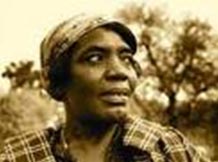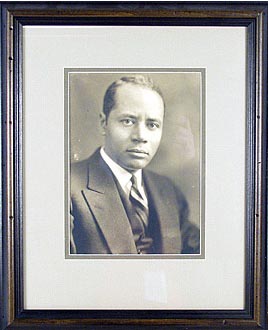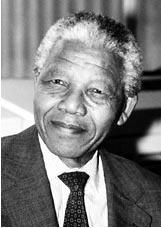Cultural Resources

FIRST SUNDAY OF ADVENT
CULTURAL RESOURCES
Sunday, November 27, 2011
Bernice Johnson Reagon, Lectionary Cultural Resource Team Commentator
I. Etymology
Advent1: ďimportant arrival,Ē 1742, an extended sense of Advent ďseason before ChristmasĒ (O.E.), from L. adventus ďa coming, approach, arrival,Ē from pp. stem of advenire ďarrive, come to,Ē from ad- ďtoĒ (see ad-) + venire ďto comeĒ (see venue). Applied in Church Latin to the coming of the Savior, either the first or the anticipated second, hence Adventist, a name applied to millenarian sects, esp. the Millerites (U.S., 1843). In English, also sometimes extended to the Pentecost.
II. Waiting . . . What I Learned from Bessie Jones
With the season of Advent, we enter a state of active waiting. The church turns to the promise of the coming of a child who will be “Savior” extending the “line of David.” This season is about what is coming and it is not just waiting to see what comes. It is being in a state of knowing and willingness to be a part of what is to be a new direction that goes beyond what we know as our physical earthbound journey. It invites us to consider that we can while in this earthly state (that begins and ends) enter the stream of life that never ends. As I began to open myself to this Advent unit, I focused on David’s line extending forever, and the lyrics of a song I learned from Bessie Jones knocked on the door of my memory:
My name is written on Davidís Line
My name is written on Davidís Line
My name is written on Davidís Line
Iím gonna to Heaven on the wheels of time
Refrain
Adam and Eve, Oh no
Adam and Eve donít tell it to me
Meet me at the door donít tell to me
Hai-sala do ah sala seri
When I get to Heaven goní tell the news
When I get to Heaven goní tell the news
When I get to Heaven goní tell the news
Walk around with who-ever I chose
This was a childrenís song and the text makes clear that those of us who are Christians in the 21st century are evidence of the promise in Psalm 89. Also, the lyrics tell us that in spite of the failures of Adam and Eveóall of us are human and fall down sometimesóthe promise is not broken and Davidís line continues. As a Christian, I am part of that extension, and my journey does not end on this side of the river.
 |
I met Bessie Jones in 1963 when as a member of the Student Nonviolent Coordinating Committee (SNCC) Freedom Singers, we were performing at the Newport Folk Festival. Bessie was singing with the Georgia Sea Island Singers. She had been born in Southwest Georgia about 20 miles from where I was born, and our repertoire and style of singing was from the same system. She was a sage, a healer, older than me and open to sharing what she knew to anyone who wanted to learn. Singing the Sea Island songs with the Georgia Sea Island Singers (Southeast Georgia, off the coast of Brunswick) and the Southwest Georgia songs brought me into two regional traditional music repertoiresósoutheast was the Gullah songs, and southwest was the tradition into which I was born. Sitting at the feet of Bessie Jones greatly expanded my understanding that what we call game songs or plays from my own regional tradition were often teaching songs and plays about who we were, passing along to us as children the purpose for our being.2
III. This Season and Its Songs through the Lens of the African American Experience
In this country, as soon as we move past Thanksgiving, our attention turns to what was for me as a child the highest celebration in the year. Traditionally, the preparation focused on the gift of children. This has been seriously distorted as the efforts of our commercial culture has moved the preparation season back earlier into the fall and focused it on buying.
However, even in 2011, the African American church continues to gather in sacred communities guided by the life and teachings of the child who is to come, whose name we call Jesus. And for this Advent lesson we turn in particular to the way in which the African American Church prepares for this witness and how we have historically understood the concept of active waiting.
The texts of the spiritual “Trying to Get Ready” shares that we see our lives on this earth as a journey and that there is a way we can live transformatively during this life and encounter the possibilities beyond this life.
Trying to Get Ready
Trying to get ready
Trying to get ready
Trying to get ready
Ready to try on my long white robe
Ready to try on my long white robeÖ
Curtis Mayfield captured the same spirit in his contemporary rendering during the Civil Rights Movement. See the selection as sung by the Acapella Company. Sample:
http://www.acappella.org/wmafiles/spiritualslp/peoplegetready.wma
People Get Ready
People get ready thereís a train a-cominí
Donít need no ticket, get on board
All you need is faith to hear that diesel humminí
Donít need no ticket, just thank the Lord
Thereís a train cominí, cominí down the track
All the people who ainít ready better step on back
All you need is faith to hear that diesel humminí
Donít need no ticket, you just get on board
Chorus:
All aboard, (youíd better) get on board (get on board)
All aboard, get on board (come on, get on board)
(Chorus in background)
Faith is the key that opens doors to boarders
Picking up passengers from coast to coast
All you need is faith to hear the diesel humminí
Donít need no ticket to meet the Lord of hosts.
The African American journey is marked with times we moved in faith, believing that as children of Davidís line, coming through torturous trials of kidnapping, slavery, legalized segregation, and racism, our very survival called for us to be a light and a symbol for what is right and just. It is clear that the struggle against slavery was carried forth by those of us who carried the promise that we would walk free through the power of our witness to Jesus. It is clear in our struggles that we were working for an end to our suffering and at the same time working for the transformation of a nation too much out of step with freedom and justice.
In claiming Jesus as our guide, in being a part of the Christian community, we are a part of the evidence of the continuance of the line. Jesus was born into a family whose people struggled under the rule of the Roman Empire. He was born into an oppressed group. African Americans were 400 years in slavery in this countryówe understand struggle and we have evolved a culture that helps us sustain ourselves when things do not come immediatelyówaitingÖ.
The song “I’m Willing to Wait on Jesus,” sung by Albertina Walker and the Caravans, is another song about waiting. See the selection online at
www.youtube.com/watch?v=J9jqFk7HXcg. The lyrics for the song are below.
Iím Willing to Wait on Jesus
Iím willing (Iím willingÖwilling to wait)
Iím willing (Iím willingÖ) Oh yes I am (Iím willing to wait)
Iím willing to wait on (wait on) Wait on the Lord God Almighty (the Lord God Almighty)
My Bible tells me (Tells me) Heís coming again (Heís coming again)
Oh yes He is (I believe He is)
Oh yes He is (I believe He is)
I go to prepare a place for you
These words my Bible read
Since the Man has been gone
My heart is sometimes sad
But I remember what He said
Iím willing (Iím willingÖwilling to wait)
Iím willing (Iím willingÖ) Oh yes I am (Iím willing to wait)
Iím willing to wait on (wait on) Wait on the Lord God Almighty (the Lord God Almighty)
My Bible tells me (Tells me) Heís coming again (Heís coming again)
Oh yes He is (I believe He is)
Oh yes He is (I believe He is)
Iím willing to wait on Jesus (Iím willing to wait)
Sometimes it seems like all my hope is gone (Iím willing to wait)
Then again it seems like everything I do is wrong (Iím willing to wait)
Oh, thatís alright I got to wait on Jesus (Iím willing to wait)
Every every now and then (Iím willing to wait)
Oh, when I really think I need a friend (Iím willing to wait)
I know God is going to wipe away all my tears (Iím willing to wait)
All I got to do is wait on Jesus (Iím willing to wait)
I want you to know that my Bible (Tells me He is coming again)
And I believe he is (And I believe he is)
O Lord (And I believe he is.)
IV. Charles Hamilton Houston and Nelson Mandela, Active Waiting
 |
Charles Hamilton Houston
One of the most influential figures in American life, Charles Hamilton Houston, was born at the turn of the century in 1895, almost as a response to the Plessy vs. Ferguson Supreme Court ruling that legalized a system of racial segregation. The power of Houstonís work made his birth seem as a calling and a response to this legal effort to curtail the quality of African American freedom in America. Houston moved into his calling between the two world wars. A scholar and lawyer, he dedicated his life to challenging the laws of his country to bring greater freedoms to his people. He challenged the notion that segregation could exist in a society committed to the freedom of her citizens.
Houston earned an undergraduate degree at Amherst College and a law degree at Harvard University. When he returned to Washington to join his father’s law firm, he began taking on civil rights cases. Mordecai Johnson, the first African American president of Howard University, named Houston to head the law school in 1929. Houston set out to train attorneys who would become civil rights advocates. In Attorney Houston’s view, a lawyer was an agent for social changeó“either a social engineer or a parasite on society.”
Charles Hamilton Houston grew up in a middle-class family in Washington, D.C. His father, William Le Pre Houston, was an attorney, and his mother, Mary Hamilton Houston, was a seamstress. During World War I, Houston was an artillery officer in France. He witnessed and endured the racial prejudice inflicted on black soldiers. These encounters fueled his determination to use the law as an instrument of social change. He asserted, “This fight for equality of educational opportunity (was) not an isolated struggle. All our struggles must tie in together and support one another. . . We must remain on the alert and push the struggle farther with all our might.”
Houston dedicated his life to using law as a tool to remedy consequences of racial discrimination and to break down structures that produce racial inequality. As vice-dean of Howard Law School in the 1930s, Houston not only gained the historically black schoolís accreditation, but he also brought in the nationís top black litigators and teachers to Howard during a time they likely would have been denied professorships at white law schools. Civil rights law was more or less invented under Houstonís leadership at Howard. The school trained nearly a quarter of the nationís black law students, including many civil rights luminaries such as Thurgood Marshall, who was his protťgť and carried forth the challenges after his death in 1949 with the iconic Brown v. Board of Education case and went on to become a Supreme Court Justice.3
Nelson Mandela
 |
Nelson Rolihlahla Mandela was born in Transkei, South Africa, on July 18, 1918. His father was Chief Henry Mandela of the Tembu Tribe. Mandela himself was educated at University College of Fort Hare and the University of Witwatersrand and qualified in law in 1942. He joined the African National Congress (ANC) in 1944 and was engaged in resistance against the ruling National Partyís apartheid policies after 1948. He went on trial for treason in 1956Ė1961 and was acquitted in 1961.
After the banning of the ANC in 1960, Nelson Mandela argued for the setting up of a military wing within the ANC. In June 1961, the ANC executive considered his proposal on the use of violent tactics and agreed that those members who wished to involve themselves in Mandelaís campaign would not be stopped from doing so by the ANC. This led to the formation of Umkhonto we Sizwe. Mandela was arrested in 1962 and sentenced to five yearsí imprisonment with hard labor. In 1963, when many fellow leaders of the ANC and the Umkhonto we Sizwe were arrested, Mandela was brought to stand trial with them for plotting to overthrow the government by violence. His statement from the dock received considerable international publicity. On June 12, 1964, eight of the accused, including Mandela, were sentenced to life imprisonment. From 1964 to 1982, he was incarcerated at Robben Island Prison, off Cape Town; thereafter, he was jailed at Pollsmoor Prison, nearby on the mainland.
During his years in prison, Nelson Mandelaís reputation grew steadily. He was widely accepted as the most significant black leader in South Africa and became a potent symbol of resistance as the anti-apartheid movement gathered strength. He consistently refused to compromise his political position to obtain his freedom.
Nelson Mandela was released on February 11, 1990. After his release, he plunged himself wholeheartedly into his lifeís work, striving to attain the goals he and others had set out almost four decades earlier. In 1991, at the first national conference of the African National Congress (ANC) held inside South Africa after the organization had been banned in 1960, Mandela was elected President of the ANC while his lifelong friend and colleague, Oliver Tambo, became the organizationís National Chairperson.4
Charles Houston and Nelson Mandela remain two of the loftiest examples in history of how to work while waiting for change. They remind us that the Advent season is not only a season of expectation, but it is also a season of fulfillment. They are men who inspire each of us and hopefully cause us never to forget, in the words of this year’s first Sunday of Advent Lectionary commentator, Dr. Raphael Warnock, that we “may yet have a divine word to say about God’s promise through David [if we] would be men and women chasing after God’s own heart.”
Notes
2. From personal conversation with Bessie Jones, Georgia Sea Island Singer and Southwest Georgia culture sage.
3. http://www.charleshamiltonhouston.org/Houston.aspx. Special thanks to Charles Hamilton Houston Jr. for the use of the photo of his father.
4. Information about Nelson Mandela obtained online at
http://nobelprize.org/nobel_prizes/peace/laureates/1993/mandela-bio.html accessed 9 May 2011



